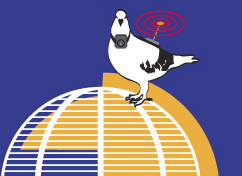|
|
|
|
Container Culture
|
Written by Steve Dietz
|
|
Mar 11, 2006 at 08:59 PM |
Hu Jie Ming Interactive installation: 6 cabin window encased LCD monitors mounted on both sides of the container 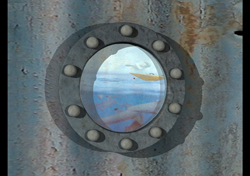 Altitude Zero (2006) project contemplates current global cultural conditions. The interaction between dominant cultural forms and marginal cultures precipitates the emergence of fragmented pockets of variant cultural forms. Often disparaged and in danger of extinction, these edgy cultures are finding their ways for manifestation and representation. Altitude Zero (2006) project contemplates current global cultural conditions. The interaction between dominant cultural forms and marginal cultures precipitates the emergence of fragmented pockets of variant cultural forms. Often disparaged and in danger of extinction, these edgy cultures are finding their ways for manifestation and representation. The installation consists of 6 monitors camouflaged as cabin windows. The video images show ocean waters, drifting materials such as abandoned and polluted objects, symbolizing detachment and alienation from mainstream cultural domains. The objects drift between sea bottom and sea level creating a sense of movement and instability. The drifting materials remind us of the remanents of different cultures and times. Sometimes they clash against the windows, and float away at other times, resonating between the viewers and the objects. Video images are activated according to the audience presence and movement via sensors. |
|
Last Updated ( Apr 12, 2006 at 01:58 PM )
|
|
Read more...
|
|
|
Written by Steve Dietz
|
|
Mar 11, 2006 at 08:44 PM |
Xing DanWen Slide projection and one large pile of shredded photographs scattered on the floor
Part of Container Culture (Beijing)
Curated by Zhang Ga 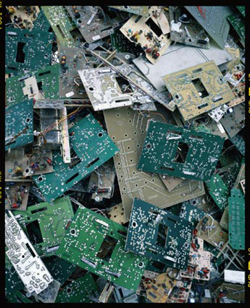 Xing DanWen seeks to sketch a visual representation of modernity in the 21st century. She carefully chooses direct and intimate moments to portray the objects that she finds. Since the summer of 2002, she has traveled several times to South China's Guangdong Province, one of the most developed areas in the country. Along the coast, more than 100,000 people from Guangdong and migrant workers from Western China make their living by recycling piles of computer and electronic trash, operating in rough environment and social conditions. This huge amount of e-trash is shipped from industrialized countries - Japan, South Korea and mostly from the United States, and dumped here. Xing DanWen seeks to sketch a visual representation of modernity in the 21st century. She carefully chooses direct and intimate moments to portray the objects that she finds. Since the summer of 2002, she has traveled several times to South China's Guangdong Province, one of the most developed areas in the country. Along the coast, more than 100,000 people from Guangdong and migrant workers from Western China make their living by recycling piles of computer and electronic trash, operating in rough environment and social conditions. This huge amount of e-trash is shipped from industrialized countries - Japan, South Korea and mostly from the United States, and dumped here. We are in an information and communication era, and rely extensively on these high-tech facilities for our modern life. These machines become deeply rooted in our daily activities, replacing the old ways of doing things. Millions of newly purchased products follow on millions of trashed ones. Confronted with vast piles of dead and deconstructed machines, the overwhelming number of cords, wires, chips and parts, with the clear indication of the company logos, model numbers and even individual employees, This deeply shocked Xing Danwen Modernization and globalization shape urban development. In China, she has experienced and witnessed the changes that have taken place under the influence of Western modernity. These changes have contributed to a strong and powerful push for development in China, but at the same time they have led to major environmental problems and social inequality in remote corners of China. |
|
Last Updated ( Apr 12, 2006 at 01:58 PM )
|
|
Read more...
|
|
|
Written by Steve Dietz
|
|
Mar 11, 2006 at 09:18 PM |
Huang Shi Interactive installation, 5 glass bottles, mp3 players/recorders, speakers and microphones, processors, batteries
Part of the exhibition Container Culture (Beijing)
Curated by Zhang Ga 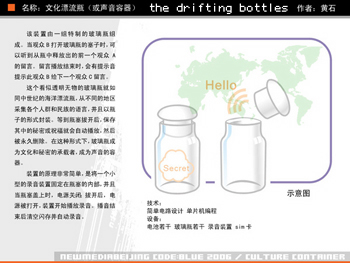 In the middle ages, drift bottles were one of the few means for sailors to communicate with others in the open seas. Notes / messages sealed in the bottles often carried important information or heartfelt blessings. It would be a great surprise for a mediaeval sailor to find a drift bottle likely from some unknown destinations. Mysterious, incidental, and expectant, drift bottle can be seen as a symbol of maritime cross-culture exchange. Today, cell phone, internet and television are rapidly changing our way of communication. Anyone could easily connect with others by simply punching some buttons. High technology is a double-edged sword not only facilitating our daily communication but also eliminating the joy of intimacy and surprise once enjoyed by many. |
|
Last Updated ( Apr 12, 2006 at 01:57 PM )
|
|
Read more...
|
|
|
Written by Steve Dietz
|
|
Feb 08, 2006 at 05:46 PM |
![in[]ex in[]ex](../../../../images/artwork/inex_logo.gif) Artists Kate Armstrong, Bobbi Kozinuk, M. Simon Levin, Laurie Long, Leonard Paul, Manual Pina, Jean Routhier
Curator Alice Ming Wai Jim.
IN[ ]EX, an interactive, city-wide collaborative media art project involving a shipping container and thousand of smaller modules. IN[ ]EX is a distributed audio sculpture in which thousands of wooden blocks with embedded technology are released into the city to engage the public as active agents. IN[ ]EX invites audience activity, movement and interaction, as well as engages with the larger urban context as the blocks are dispersed throughout the city and culture in general. |
|
Last Updated ( Jul 07, 2006 at 02:45 PM )
|
|
Read more...
|
|
|
Moveable Types and Instant Spaces / Love Virus |
|
Written by Michela Pilo
|
|
Jul 19, 2006 at 12:38 PM |
Moveable Types and Instant Spaces Artists: Taeyoon Choi, Tellef Tellefson and Cheon Pyo Lee Moveable Types and Instant Spaces explores how temporary types of architecture can define an experience, and alternatively how social or personal actions and objects can change the perception of a space Lightweight materials are used, suggesting to the viewer that architecture is a concept rather than a reality and that it has less importance than that which it contains. “Pod types” are lightweight architectures that play off of existing sites. They human in scale and can be placed temporarily within the landscape. Working off the idea of wearable architecture, these small types strive to create personal space in the public realm. Each pod type derives its function and a minimum of form from the objects it contains, and in exchange the function of the objects is altered by the architecture. |
|
Read more...
|
|
|
Written by Steve Dietz
|
|
Apr 01, 2006 at 04:41 PM |
Container Culture: Auckland 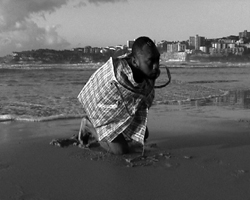 Pacific Washup was produced during a short collaborative residency at Performance Space in Sydney, 2003. The three collaborating artists had never met before and had no prior knowledge of each others practice. Through the first days of the residency we engaged in dialogue about who we were, where we came from, and why we had been brought together. This was a predominantly cultural discussion of family and place. We had commonalities through our Polynesian heritage and links to the Pacific Islands and New Zealand. However, our contrasting 'uncommonalities' regarding the geographic and cultural positions we inhabit as indigenous people of the Pacific, as migrants or non-migrants, became significant too. Pacific Washup was produced during a short collaborative residency at Performance Space in Sydney, 2003. The three collaborating artists had never met before and had no prior knowledge of each others practice. Through the first days of the residency we engaged in dialogue about who we were, where we came from, and why we had been brought together. This was a predominantly cultural discussion of family and place. We had commonalities through our Polynesian heritage and links to the Pacific Islands and New Zealand. However, our contrasting 'uncommonalities' regarding the geographic and cultural positions we inhabit as indigenous people of the Pacific, as migrants or non-migrants, became significant too. |
|
Last Updated ( Apr 24, 2006 at 10:46 AM )
|
|
Read more...
|
|
|
Written by Steve Dietz
|
|
Apr 01, 2006 at 02:05 PM |
Annie On Ni Wan Hong Kong Container “The phenakistoscope (also spelled phenakistiscope) was an early animation device, the predecessor to the zoetrope. . . . The word "phenakistoscope" comes from Greek roots meaning "deceiving viewer"."
Wikipedia Phenakistoscape is a kinetic interface through, which is an experiment in the metaphysics of moving image projection and an exploration of the language of mobile projection, with particular emphasis upon on its distinctive temporal and spatial modalities. 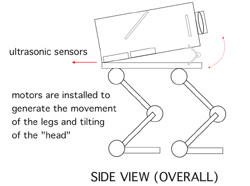 Phenakistoscape uses a custom-made biped robotic video projector. The camera movements of the moving images take control of the movement of the robotic projector, which pans to left when there is a pan to right shot in the video and tilts up when there is a tilt down shot. The robotic video projector walks randomly with slow speed inside the container space as well. Phenakistoscape uses a custom-made biped robotic video projector. The camera movements of the moving images take control of the movement of the robotic projector, which pans to left when there is a pan to right shot in the video and tilts up when there is a tilt down shot. The robotic video projector walks randomly with slow speed inside the container space as well. With Phenakistoscape, a mechanical algorithmic approach to video projection is introduced as a language of mobile video projection. New methods for extending the practice of moving image space within physical space are presented as a dynamic and unexpected labyrinth that reconstructs the architecture of time and space. Phenakistoscape presents an entirely distinct scheme for unfolding the profound poetry encoded in cinematic space, and hence it effects the creation of an exceptional perception of moving images. |
|
Last Updated ( Apr 01, 2006 at 03:49 PM )
|
|
Read more...
|
|
|
Written by Steve Dietz
|
|
Apr 01, 2006 at 05:05 PM |
Rachael Rakena Container Culture: Auckland rere ... flow, fly, be carried by the wind, sail, rush, flee, escape, rise, leap, . . .
hiko ... move at random or irregular, lightning, electric, . .
whakapapa ... layering, genealogy 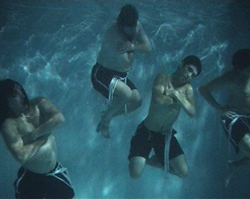 An email announcing the arrival of a newborn child bears the same face as an email expressing sympathy at the loss of a loved one. The digital text of the email and its aesthetic of pixels create the new patterns for the wharenui (meeting house) of cyberspace in which our indigenous community often meet. This work explores the communication using excerpts of real emails circulating within a Ngai Tahu community (an indigenous tribal group from the South Island of New Zealand). An email announcing the arrival of a newborn child bears the same face as an email expressing sympathy at the loss of a loved one. The digital text of the email and its aesthetic of pixels create the new patterns for the wharenui (meeting house) of cyberspace in which our indigenous community often meet. This work explores the communication using excerpts of real emails circulating within a Ngai Tahu community (an indigenous tribal group from the South Island of New Zealand). Rerehiko becomes a cyberspace whare whakairo (decorated meeting house). The community float through their own email text performing narratives that evoke their many collective concerns in the new century. Linking to creation stories through the construction of a new realm of the cosmos, the cyberspace, in which this indigenous group already resides, an echo of the Pacific Ocean crossed by our ancestors. |
|
Last Updated ( Apr 01, 2006 at 05:12 PM )
|
|
Read more...
|
|
|
Written by Steve Dietz
|
|
Apr 01, 2006 at 11:33 PM |
Jin Jiangbo Container Culture: Beijing 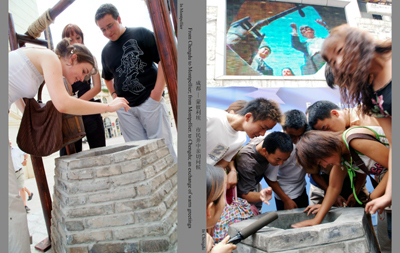 The third eye perceives the earth. The third eye perceives the world, The third eye perceives you and me, And the third eye perceives our mind. Imagination from the far west and far east of the earth. The open of this third eye shall let the imagination hold free and fair dialogues, and through the channel, it shall inspire hope for the people from these two cities. The third eye crosses space and beyond. |
|
|
Written by Steve Dietz
|
|
Mar 11, 2006 at 08:02 PM |
Xu Bing Installation with artifacts, neon arrow signs, display pedestal
Part of the exhibition Container Culture
Curated by Zhang Ga 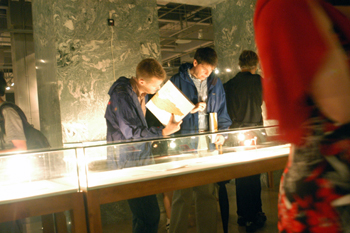 Zhong Chen (Prophecy) is one component of the site specific Tobacco Project. This part of the installation consists of a display pedestal encased with original accounting paperwork, bank records, receipts and other historical artifacts that document the business transactions of the British American Tobacco Company in China it its formative days, the display also contains the artist's personal financial transaction record with the Duke Foundation during the creation of the Tobacco Project in 2000. The project traces the trajectory of the multinational tobacco company's expansion into the world's most populous country and urges us to reflect on China's modern and contemporary experience as a marketplace as well as her interaction with global economy, implicitly invoking its multiple interpretations. Xu Bing's Zhong Chen realizes its experimental quality by engaging art in a new kind of dialogue with commercial culture and international relations. The work is neither a representation of observed reality nor an installation of ready-made materials. Rather, it remains in close contact with reality while transforming reality. It would be futile to ask whether it is a "work of art" because Xu Bing did not make it as such, and because its meaning can only be grasped when it is approached as part of a broad, complex social and political process. |
|
Last Updated ( Apr 12, 2006 at 01:59 PM )
|
|
Read more...
|
|
|
|
| |
|
|
|
